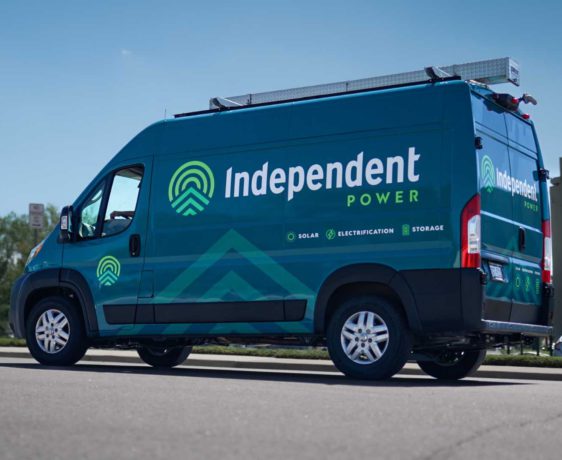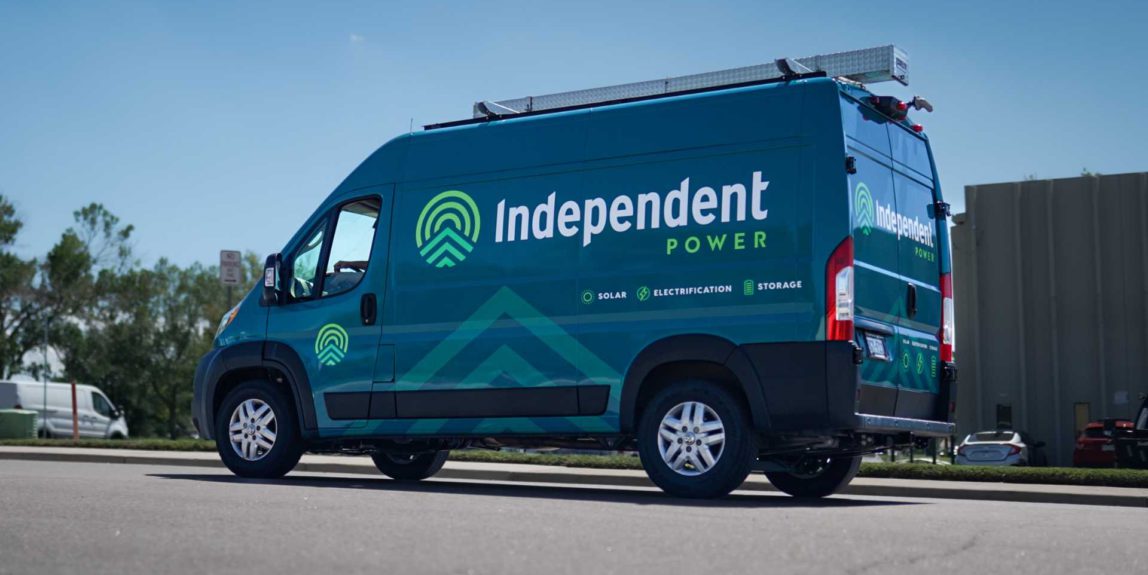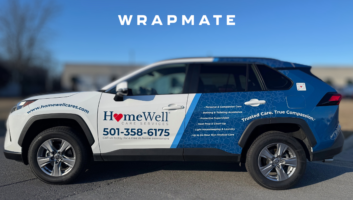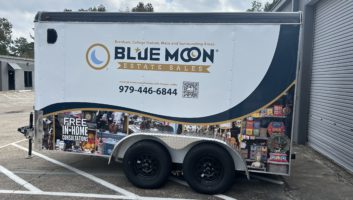

Common Mistakes to Avoid When Wrapping Fleet Vehicles
Wrapping fleet vehicles is a powerful way to promote your brand, but achieving the desired impact requires more than just slapping on some vinyl. Avoiding common mistakes during the wrapping process is essential to ensure your fleet represents your brand effectively and maintains its appearance over time. In this comprehensive guide, we’ll explore these mistakes in detail and provide insights on how to avoid them, ensuring your investment in vehicle wraps delivers maximum returns.
Using Low-Quality Materials or Installers
The Pitfalls of Choosing Subpar Materials
When it comes to fleet vehicle wraps, one of the most critical decisions you’ll make is selecting the right materials and installers. This choice directly impacts the durability, appearance, and overall effectiveness of your vehicle wraps. Unfortunately, many companies make the mistake of cutting corners by opting for low-quality materials or inexperienced installers, leading to subpar results that can tarnish the brand’s image and incur additional costs.
Why Quality Matters: The Case for 3M Vinyl
At Wrapmate, we exclusively use 3M vinyl film for all our fleet vehicle wraps. This choice is far from arbitrary; 3M is a leader in the vinyl industry, known for producing materials that offer exceptional durability, color consistency, and resistance to the elements. High-quality materials like 3M vinyl are engineered to withstand the rigors of daily use, including exposure to harsh weather conditions, UV rays, and road debris. These factors are particularly crucial for fleet vehicles, which are often on the road for extended periods and across diverse environments.
Opting for low-quality vinyl might save money upfront, but it often leads to issues such as fading, peeling, and cracking much sooner than expected. These problems not only degrade the appearance of the vehicle but can also damage the underlying paint, leading to costly repairs. In contrast, 3M vinyl comes with a comprehensive warranty, offering peace of mind that the wraps will maintain their integrity and vibrant appearance for years.
The Importance of Skilled Installers
Even the highest quality materials can underperform if not applied correctly. The installation process requires precision, experience, and an understanding of how to work with the specific contours and surfaces of each vehicle. Poor installation can result in bubbles, wrinkles, and misaligned graphics, all of which detract from the wrap’s effectiveness and longevity.
Finding reputable installers across different markets in the USA can be challenging. Not all installers have the same level of expertise or attention to detail, which can lead to inconsistent results, especially for businesses with large fleets spread across multiple locations.
Wrapmate’s Network of Certified Installers
To address this challenge, Wrapmate has curated a network of over 2,000 certified Wrapmate Pros across the country. Each installer in this network has been thoroughly vetted and certified by Wrapmate, ensuring they meet the highest standards of quality and professionalism. This extensive network allows us to provide consistent, high-quality installations no matter where your fleet vehicles are located.
By choosing Wrapmate, businesses can avoid the pitfalls of using low-quality materials or inexperienced installers. Our commitment to using top-tier 3M vinyl and partnering with certified installers ensures that your fleet wraps will not only look great but also stand the test of time, delivering maximum value and impact for your brand.
Improper Surface Preparation
The Critical Role of Surface Preparation
One of the most crucial steps in the vehicle wrapping process is surface preparation. Properly preparing the vehicle’s surface before applying the vinyl wrap ensures strong adhesion and long-lasting results. Neglecting this step can lead to significant issues, such as poor adhesion, bubbles, peeling, and a shortened lifespan of the wrap.
Key Steps in Proper Surface Preparation
For a wrap to adhere correctly and maintain its appearance over time, the vehicle’s surface must be clean, smooth, and free of any contaminants. Dirt, grease, wax, and other residues can interfere with the vinyl’s ability to bond with the vehicle’s surface, leading to weak spots where the wrap might lift or peel away. This not only compromises the aesthetic quality of the wrap but also exposes the vehicle to potential damage from the elements.
- Thorough Cleaning: The first step in surface preparation is a comprehensive cleaning of the vehicle’s exterior. This involves washing the vehicle with a detergent that removes dirt, grease, and wax. It’s essential to avoid using any products that leave behind a residue, such as silicone-based cleaners, which can hinder adhesion.
- Decontamination: After washing, the surface should be decontaminated to remove any remaining particles that could affect the wrap. This might include using a clay bar or specialized decontamination products to ensure that the surface is as smooth as possible.
- Drying: Once cleaned and decontaminated, the vehicle must be thoroughly dried. Any remaining moisture can cause the vinyl to bubble or lift, so it’s crucial that the surface is completely dry before the wrap is applied.
- Final Inspection: Before installation, a final inspection should be conducted to ensure that the surface is entirely clean and ready for wrapping..
Consequences of Skipping Surface Preparation
Skipping or rushing through the surface preparation process can have serious consequences. Vinyl wraps that are applied to improperly prepared surfaces are much more likely to fail prematurely. Common issues include:
- Bubbles and Wrinkles: Contaminants or moisture trapped under the vinyl can cause bubbles and wrinkles, which are unsightly and can reduce the effectiveness of the wrap.
- Peeling and Lifting: Poor adhesion due to inadequate preparation can cause the vinyl to peel or lift at the edges, especially in high-stress areas such as around curves or edges.
- Shortened Lifespan: A wrap applied to an unprepared surface will likely have a much shorter lifespan, meaning it will need to be replaced sooner, leading to additional costs and downtime for the vehicle.

Common Design Mistakes
The Challenges of Designing for Fleet Vehicles
Designing vehicle graphics, especially for a fleet of vehicles, is a specialized skill that goes beyond standard graphic design. It requires a deep understanding of how graphics interact with the unique contours and shapes of different vehicles. Unfortunately, common design mistakes can undermine the effectiveness of your fleet wraps, leading to wasted investment and missed branding opportunities.
Ignoring Vehicle Contours and Features
One of the most frequent mistakes in designing fleet vehicle wraps is ignoring the contours, curves, and unique features of the vehicle. Vehicles are not flat surfaces, and designs that look great on a screen or a flat template may not translate well when applied to a three-dimensional object.
- Misaligned Graphics: Without considering the vehicle’s shape, important elements like logos, text, or images can end up distorted or misaligned. For instance, a logo placed over a door handle or a window seam may be interrupted, making it hard to read or recognize.
- Lost Messaging: Essential branding messages or contact information might be obscured or cut off if not positioned carefully. This not only impacts the visual appeal but also diminishes the wrap’s effectiveness as a marketing tool.
The Dangers of Overly Complex Designs
While it’s tempting to use every inch of the vehicle’s surface to showcase intricate designs, this can often backfire. Overly complex designs can overwhelm viewers, making it difficult for them to absorb the key messages quickly—something that’s particularly important for vehicles on the move.
- Visual Clutter: Complex patterns or too much text can create visual clutter, reducing the impact of the key branding elements. Simplicity often works best, ensuring that the most important information—like your logo and contact details—stands out clearly.
- Poor Readability: Small fonts, excessive details, or too many colors can make it challenging for onlookers to read or remember your brand’s message as the vehicle passes by. A clean, bold design is more effective in capturing attention and leaving a lasting impression.
Why Specialized Designers Are Essential
To avoid these pitfalls, it’s crucial to work with designers who specialize in vehicle graphics, particularly for fleets. These professionals understand how to create designs that not only look great on a flat template but also translate perfectly onto the vehicle’s curved surfaces.
- Strategic Placement: Experienced vehicle graphics designers know how to strategically place elements so that they remain visible and impactful, regardless of the vehicle’s shape. They understand how to avoid placing critical information over seams, handles, or other disruptive features.
- Brand Alignment: Designers with expertise in fleet vehicle wraps also ensure that the design aligns with your brand identity, creating a cohesive look across all vehicles in your fleet. This consistency is vital for building brand recognition and trust as your vehicles move from location to location.
- Efficiency and Precision: By working with specialized designers, you also benefit from their ability to foresee and mitigate potential issues before the wrap is applied. This foresight saves time and money by reducing the need for costly revisions or reprints.
Avoiding common design mistakes is critical to maximizing the effectiveness of your fleet vehicle wraps. By partnering with designers who understand the unique challenges of vehicle graphics, you can ensure that your wraps are visually appealing, on-brand, and strategically placed to achieve the best results. This attention to detail can make all the difference in turning your fleet into a powerful branding tool that drives recognition and business growth.
Lack of Comprehensive Planning
The Importance of Detailed Planning
When wrapping a fleet of vehicles, one of the most common mistakes businesses make is failing to engage in comprehensive planning. Wrapping a single vehicle is challenging enough, but managing a fleet without proper planning can lead to inconsistencies, delays, and increased costs. Whether you’re working with a few vehicles or managing a nationwide fleet, careful planning ensures that the project runs smoothly, with minimal disruptions to your operations.
Ensuring Design Consistency Across the Fleet
One of the primary goals when wrapping fleet vehicles is maintaining brand consistency across all vehicles. A lack of detailed planning can result in design variations, which weakens the overall impact of your branding. Fleet wraps are powerful tools for creating a cohesive brand image, and inconsistency can send the wrong message.
- Brand Uniformity: A well-thought-out plan ensures that all vehicles are wrapped with the same design, color accuracy, and messaging. This uniformity helps reinforce your brand identity, ensuring that your fleet presents a professional, consistent image on the road.
- Detailed Design Specifications: To achieve this, detailed design specifications should be established from the start. Everything from the size of logos to the placement of text needs to be clearly defined so that every vehicle reflects the same branding. This is particularly important when wrapping a diverse fleet that includes various vehicle types, as each vehicle’s shape and size can impact how the design is applied.
- Centralized Design Approach: By working with one design team, like Wrapmate’s in-house professionals, businesses can ensure a centralized approach that keeps designs consistent, no matter where the fleet vehicles are located. This level of control is crucial for companies aiming to maintain a strong brand presence across multiple regions.
Effective Project Management
Managing the logistics of wrapping a fleet requires efficient project management. Without it, delays, miscommunications, and scheduling conflicts can arise, all of which can disrupt your operations and impact your bottom line. Comprehensive project management helps mitigate these risks.
- Coordinating Installations: For businesses with fleets in different locations, scheduling installations across multiple regions can be a logistical nightmare without proper planning. A coordinated approach ensures that installations are scheduled at times that minimize downtime for your vehicles, preventing any disruption to your operations.
- Working with Multiple Vendors: If your business is spread across multiple markets, you may need to work with various installers. However, this can result in inconsistent quality and service. Wrapmate has curated a network of over 2,000 Wrapmate Pros who are certified and vetted, ensuring you receive high-quality installation no matter where your vehicles are based. This eliminates the need to manage multiple vendors, streamlining the process and guaranteeing consistent results.
- Timelines and Deadlines: A clear, realistic timeline is key to avoiding delays. Poor planning can lead to rushed installations, missed deadlines, or worse, vehicles being off the road longer than necessary. With careful scheduling, you can ensure that all vehicles are wrapped and back in operation as quickly as possible, maximizing efficiency and minimizing disruptions.
Logistical Considerations for Large Fleets
For large fleets, wrapping vehicles involves not just the design and installation but also a series of logistical considerations that must be accounted for. Overlooking these aspects can lead to operational inefficiencies.
- Vehicle Downtime: One of the biggest challenges is managing vehicle downtime. Every day a vehicle is off the road, it’s not contributing to your business. Comprehensive planning helps minimize downtime by scheduling wraps during off-hours or periods of low activity.
- Fleet Size and Geography: The size and geographic spread of your fleet also factor into planning. For nationwide fleets, it’s crucial to have a provider with national reach and the capability to coordinate installations in various regions. With Wrapmate’s national coverage, we ensure your fleet wraps are installed efficiently, no matter where your vehicles are located.
- Post-Installation Care: Finally, comprehensive planning includes considering the long-term maintenance of your fleet wraps. Building a maintenance schedule helps preserve the appearance of the wraps, ensuring they remain in pristine condition for the long haul. This should be factored into your overall plan to protect your investment.
Lack of comprehensive planning is a critical mistake businesses can’t afford to make when wrapping fleet vehicles. A successful project requires strategic planning, including ensuring design consistency, managing installations, and considering logistical challenges. By taking the time to plan thoroughly, businesses can avoid costly mistakes, keep their fleet on the road, and ensure that their wrapped vehicles deliver the desired impact.

Neglecting Long-Term Maintenance and Care
The Role of Maintenance in Maximizing Wrap Longevity
One of the most significant mistakes businesses make after wrapping their fleet vehicles is neglecting long-term maintenance and care. While a high-quality wrap, like those using 3M vinyl films, provides excellent durability and protection, ongoing maintenance is crucial to preserving the wrap’s appearance and extending its lifespan. Without proper care, even the best wraps can deteriorate prematurely, leading to additional costs and diminished branding impact.
Importance of Post-Installation Care
Once your fleet vehicles are wrapped, the first step in maintaining their appearance is proper post-installation care. Immediately after the wrap is applied, it’s essential to allow the adhesive to cure fully. During this curing period, which typically lasts about 24 to 48 hours, it’s important to avoid washing the vehicles or exposing them to harsh conditions.
- Initial Inspection: After the wrap is applied, conduct a thorough inspection to ensure there are no bubbles, wrinkles, or areas where the wrap is lifting. Early detection of issues allows for quick corrections, which can prevent more significant problems down the line.
- Avoid Immediate Exposure: If possible, keep the wrapped vehicles out of extreme weather conditions right after installation. Excessive heat or moisture can interfere with the adhesive’s curing process, potentially leading to issues with the wrap’s adhesion.
Regular Cleaning and Maintenance
Regular cleaning is essential for keeping the wraps looking fresh and vibrant. However, it’s important to use the right techniques and products to avoid damaging the vinyl.
- Gentle Washing: Use mild soap and water to clean the wraps regularly. Harsh chemicals and abrasive scrubbing can damage the vinyl and cause the colors to fade. It’s recommended to wash the vehicles by hand rather than using automated car washes, which can be too harsh on the wraps.
- Avoid High-Pressure Washers: High-pressure washing can peel or lift the edges of the wrap, especially if the water is too hot. If using a pressure washer, keep the nozzle at least 12 inches away from the surface and avoid spraying directly at the edges of the wrap.
- Stain Removal: For stubborn stains like bird droppings or tree sap, it’s essential to clean them off as soon as possible. These substances can degrade the vinyl if left for too long. Use a soft cloth and a gentle cleaner to remove them without scratching the wrap.
- UV Protection: While high-quality wraps like those made with 3M vinyl are designed to resist UV damage, applying a UV-protective wax can add an extra layer of protection. This helps prevent fading and keeps the colors vibrant for longer.
Scheduled Inspections and Repairs
Even with regular cleaning, wraps can develop issues over time, especially on high-use vehicles that are constantly exposed to the elements. Scheduling regular inspections can help catch and address minor problems before they become significant issues.
- Edge Lifting and Peeling: Over time, the edges of the wrap may start to lift or peel, particularly on areas exposed to frequent friction or environmental stress. During inspections, pay close attention to these areas, and address any lifting immediately to prevent it from spreading.
- Fade and Discoloration: Although 3M wraps are designed to resist fading, exposure to intense sunlight over prolonged periods can cause some discoloration. If certain areas of the wrap begin to fade, consider replacing or repairing those sections to maintain a consistent appearance across your fleet.
- Prompt Repairs: If any part of the wrap becomes damaged, it’s important to repair it as soon as possible. Small tears or scratches can quickly expand, leading to more extensive damage that’s harder and more expensive to fix.
Long-Term Maintenance for Longevity
The longevity of your fleet wraps largely depends on how well they are maintained over time. Proper long-term care not only preserves the wrap’s appearance but also maximizes the return on your investment.
- Routine Maintenance Schedule: Establish a routine maintenance schedule that includes regular washing, inspections, and any necessary repairs. This proactive approach ensures that minor issues are dealt with before they escalate, helping the wraps last as long as possible.
- Storage Considerations: If possible, store wrapped vehicles indoors or under cover when not in use. This reduces their exposure to the elements, including UV rays, rain, and snow, all of which can shorten the lifespan of the wrap.
- Employee Training: Ensure that everyone who drives or maintains the vehicles is trained on how to care for the wraps properly. This includes understanding how to clean them, what products to use, and how to spot potential issues that need attention.
Neglecting long-term maintenance and care is a common mistake that can significantly reduce the lifespan and effectiveness of your fleet vehicle wraps. By investing time in regular cleaning, inspections, and prompt repairs, businesses can ensure that their wraps remain vibrant and intact, delivering consistent branding and protection for years to come.
Overlooking Legal and Environmental Considerations
Legal Compliance: A Non-Negotiable Aspect of Fleet Wraps
When planning to wrap fleet vehicles, businesses often focus on design, materials, and installation, but it’s equally important to consider the legal and environmental aspects of vehicle wraps. Overlooking these factors can lead to unforeseen complications, including fines, legal disputes, and negative environmental impacts. Ensuring that your fleet wraps are both legally compliant and environmentally responsible is crucial for long-term success.
Understanding Local Regulations
Legal regulations concerning fleet wraps can vary significantly depending on the region, state, or country where your vehicles operate. Compliance with these laws is essential to avoid penalties and ensure that your branding efforts do not encounter legal obstacles.
- Local Regulations on Vehicle Wraps: Different municipalities may have specific rules regarding the types of graphics allowed on commercial vehicles. For instance, some areas have restrictions on the use of certain colors, reflective materials, or the amount of text that can be displayed. It’s important to research and understand these local laws before wrapping your fleet vehicles to ensure that your designs comply with all applicable regulations.
- Permits and Approvals: In some regions, you may be required to obtain permits or approvals before applying a wrap to a commercial vehicle. This is particularly relevant for vehicles that display large graphics or advertise certain products or services. Failing to secure the necessary permits can result in fines or orders to remove the wrap.
- Safety and Visibility Standards: Many areas have specific safety standards that must be met, particularly concerning the visibility of essential vehicle markings such as license plates, lights, and DOT numbers. Your wrap design must ensure that these elements remain clearly visible and unobstructed to comply with legal requirements.
- Advertising Laws: Certain types of advertising content may be restricted or regulated by law, including the use of images, language, or promotional claims. Make sure your wrap’s messaging complies with advertising laws to avoid legal challenges or negative publicity.
Wrapping your fleet vehicles is a significant investment in your brand’s visibility and reputation. By avoiding common pitfalls—such as using low-quality materials, neglecting proper surface preparation, and overlooking detailed planning—you can ensure that your fleet wraps are not only visually striking but also durable and effective in promoting your business.
At Wrapmate, we understand the complexities involved in executing flawless fleet wraps. From our use of premium 3M vinyl to our network of over 2,000 certified installers nationwide, we are committed to delivering high-quality, consistent results that enhance your brand’s image. Our in-house design team specializes in creating custom graphics that align with your brand identity while considering the unique contours of each vehicle.
Don’t let avoidable mistakes compromise the impact of your fleet wraps. Contact our expert fleet graphics team today to schedule an appointment and learn how we can help you maximize the return on your investment. Let us guide you through the process, from planning and design to installation and long-term maintenance, ensuring that your fleet stands out on the road and leaves a lasting impression.





